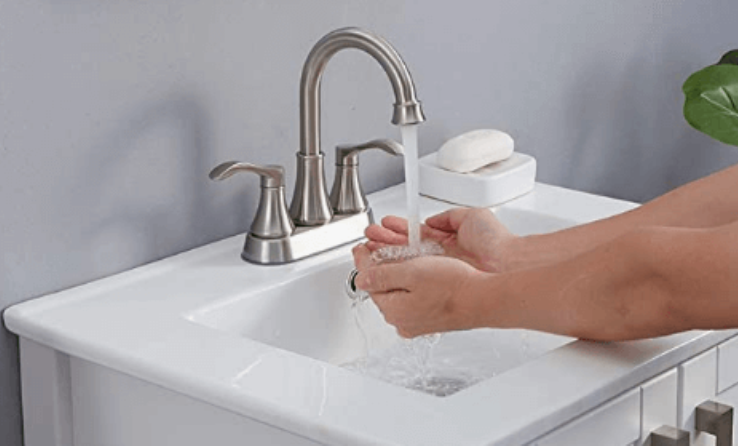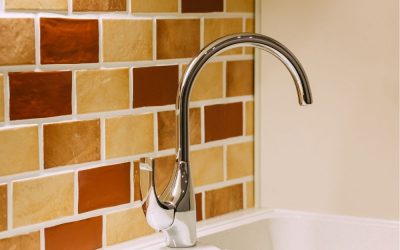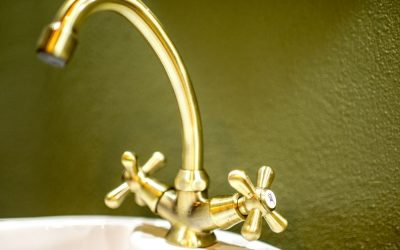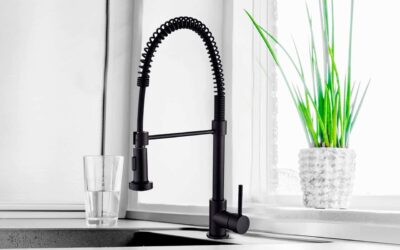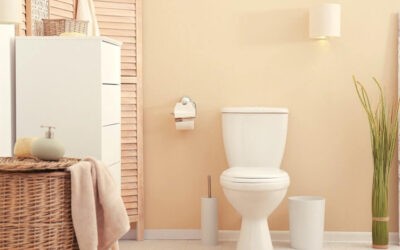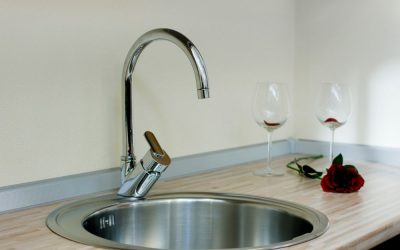Brushed nickel faucets are a popular choice for kitchens and bathrooms because they look sleek and modern. But one downside to brushed nickel faucets is that they can sometimes spot, streak, and form a patina. If you’re not sure how to keep brushed nickel faucets from spotting, we shall provide a few tips in this article.
While the spotting may not be a big deal to some people, others may find it unattractive.
Spotting or water spots on brushed nickel faucets are generally caused by minerals in hard water. Over time, these mineral deposits can build up and cause the nickel fixtures to appear dull or spotted.
The good news is that there are a few things you can do to reduce or prevent the formation of water spots on your brushed nickel faucets. So keep reading to learn about this.
Why does brushed nickel shower water spots?
It’s not entirely clear why brushed nickel is prone to water spots formation.
It seems to have something to do with the alloy used in brushed nickel fixtures oxidizing and then depositing calcium and magnesium salts onto the surface of the metal.
Some people say that the spots arise when the fixture interacts with hard water. Hard water contains high levels of minerals, specifically magnesium and calcium, which can leave deposits on the surface of the metal.
Whatever the reason, water spots can accumulate over time and damage the surface of the metal due to corrosion.
So, it is important to get rid of the spotting as well as find ways to prevent water spots from forming on your brushed nickel shower fixtures.
How to remove water spots from brushed nickel faucets
If you have brushed nickel faucets, then you know how important it is to keep them clean and free of water spots. But sometimes, no matter how careful you are water spots can appear. Here’s how to remove them quickly and easily.
1. Using vinegar
-Start by mixing together equal parts white vinegar and water in a bowl.
-Dip a clean microfiber cloth into the mixture and wring it out so that it’s damp but not dripping wet.
-Gently rub the affected areas of your faucet with the cloth until the water spots disappear.
-Finally, rinse the area with clean water and dry it off with a soft towel.
2. Brushed nickel cleaner or wax/polish
Another quick option is to use a cleaner designed for removing spots from brushed nickel fixtures.
If you’re looking for a product that can help you keep your brushed nickel fixtures looking shiny and new, then Flitz Faucet Wax, polish and sealant, is a great option.
This polish is specifically designed to protect polished and sealed surfaces, so it’s perfect for use on your faucets. It’s easy to apply and will last for up to six months, so you don’t have to worry about re-applying it regularly.
Plus, it repels water and prevents water spots, fingerprints, and smudges, so your fixtures will always look clean shiny.
3. Dryer sheets
It is possible to remove water spots from brushed nickel fixtures using dryer sheets.
The best way to do it is to wrap a dryer sheet around your hand like a glove, and then use your hand to rub the dryer sheet over the water spots.
You may have to do this a few times before the spots are completely gone.
How to keep brushed nickel faucets from spotting
There are a few things you can do to keep your brushed nickel faucets from spotting.
1. Clean regularly
Regular care and cleaning will help keep your brushed nickel faucets looking like new for years. So make sure to clean the faucets regularly with a soft cloth and warm water. You can also use a mild soap if necessary.
Also, wiping down the faucets after each use with a soft cloth and some vinegar or lemon juice can help to prevent water spots.
After cleaning, be sure to rinse well and dry the faucets with a soft cloth.
2. Avoid harsh cleaners
When cleaning brushed nickel faucets avoid using harsh chemicals and cleaners. These can damage the finish and leave your faucet looking worse than before.
Also, use a soft cloth or sponge when cleaning because abrasive materials can cause scratching and damage the finish.
3. Dry faucets after cleaning
Make sure to always dry your faucet after cleaning it, in order to prevent any water spots from forming.
It’s such a simple step, but doing this will help keep your faucet looking shiny and new for longer.
Plus, it’ll just make cleaning that much easier down the line since you will not be dealing with built-up water spots.
4. Remove spots and buildup frequently
If you do notice any spots or buildup on your faucets, remove them immediately to prevent forming stubborn stains.
You can remove them carefully with a soft toothbrush or cotton swab dipped in white vinegar.
5. Install a water softener
Another option is to install a water softener in your home if you have hard water.
Installing a water softener is one of the best ways to prevent hard water spots from forming on your faucets and other fixtures.
Hard water contains high levels of minerals, like calcium and magnesium, which can leave behind unsightly film and residue.
A water softener works by removing these minerals from your water supply, which helps to keep your fixtures clean and spot-free.
If you already have hard water spots on your faucets, you may be able to remove them with a gentle cleaner or vinegar and warm water. However, preventing hard water build-up in the first place is always the best course of action.
Can you use Rubbing alcohol on brushed nickel faucets?
There is some debate over this. Some say that it’s okay to use a little bit of alcohol on a soft cloth to clean brushed nickel faucets, while others say that it’s not a good idea because the alcohol can strip the finish off.
I’d recommend erring on the side of caution and avoiding using alcohol altogether since it’s not necessary and you don’t want to damage your faucet. There are plenty of other safe and effective ways to clean them.
Can you use Wd40 on brushed nickel fixtures?
Yes, you can use WD40 on brushed nickel faucets. WD40 is a lubricant, so it will help to keep the moving parts of the faucet working smoothly.
It will also help to protect the brushed nickel finish from corrosion. Be sure to wipe off any excess WD40 with a clean cloth, and then buff the surface with another cloth until it’s shiny.
Does vinegar damage brushed nickel?
There is no definitive answer to this question since it appears to depend on the specific type of vinegar being used, as well as the characteristics of the brushed nickel finish.
In general, vinegar is a weak acid and diluted with water, it’s unlikely to cause any damage to brushed nickel over time.
Just remember to always rinse it off completely after cleaning. Also, it’s always best to test a small area first just to be sure.
How to clean kohler brushed nickel faucets
Kohler brushed nickel faucets are known for their durability and easy-to-clean surface.
To maintain the beauty of your faucet, Kohler recommends that you clean it with a mild soap and water solution regularly.
For tougher build-up, you can use a soft sponge or cloth with distilled white vinegar or non-abrasive cleaners. Be sure to rinse well after cleaning and dry the surface to prevent dulling or spots.
How to clean Moen brushed nickel faucets
It’s actually pretty simple to clean Moen brushed nickel faucets. Just use a soft cloth and some warm, soapy water.
If there are any tough spots or built-up gunk, you can use a little bit of vinegar or baking soda to help loosen it up.
Rinse the faucet thoroughly with clean water when you’re done and you’re good to go.
See also: Are Moen and Delta shower valves interchangeable?
Conclusion
These are just a few tips on how to keep brushed nickel faucets from spotting and keep them looking their best.
By following these simple steps and using a little bit of elbow grease on a regular basis, your faucets should stay shiny and spotting-free for years to come.
Have you tried any of these methods to clean your faucets? Let us know in the comments below.

